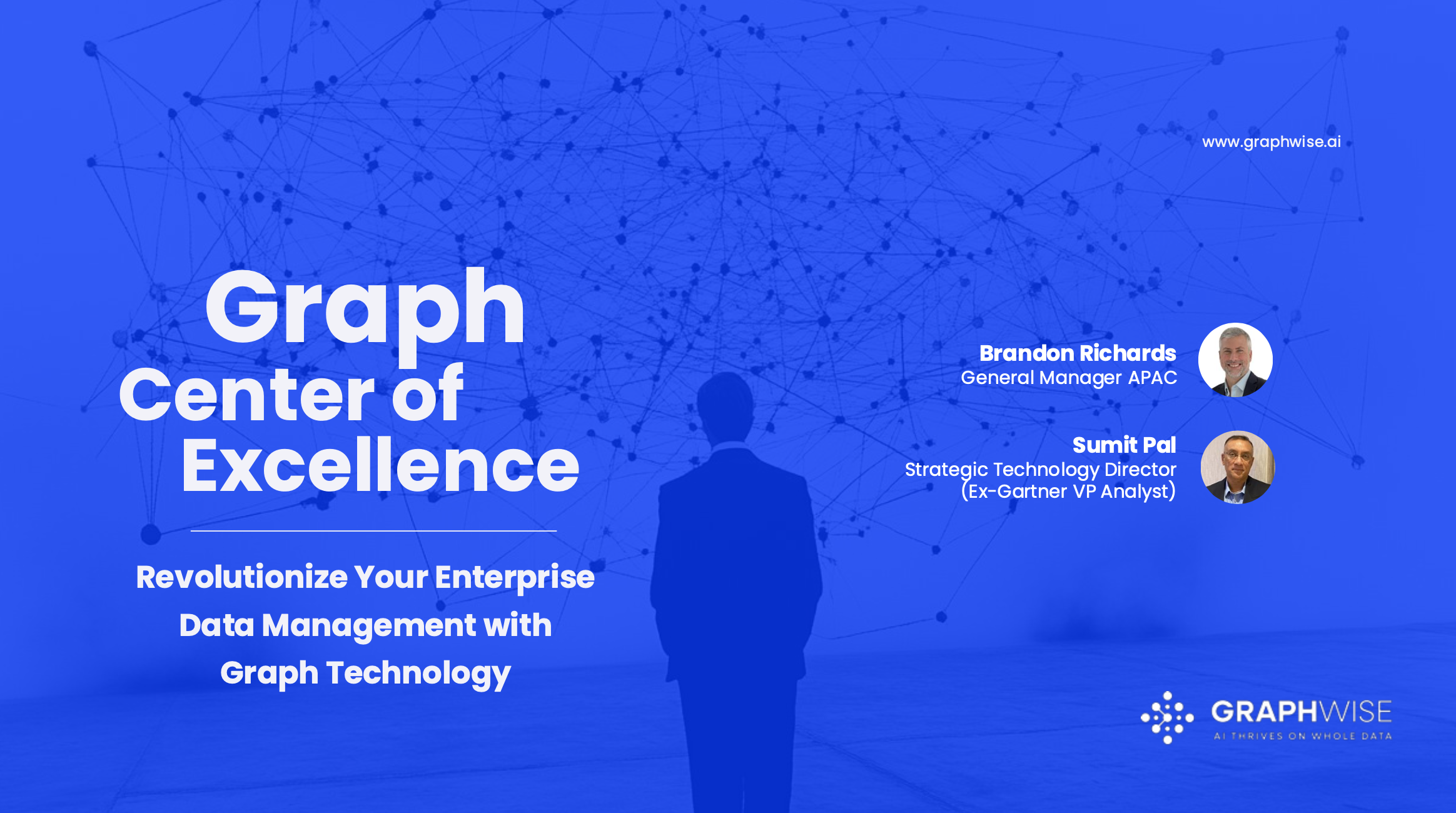Recorded on May 7, 2025

As we stand on the brink of the AI revolution, many organizations find themselves entangled in the complexities of disparate, isolated data systems. Challenges like data governance, trust issues, and poor data quality are just a few of the hurdles stalling the progress of enterprise AI initiatives.
Enter graph technologies—your essential ally in crafting data-driven strategies for the AI era. These innovative approaches streamline and elevate data management, offering substantial cost reductions while significantly enhancing your ability to derive valuable insights and integrate them seamlessly into your business operations.
This session underscores the imperative for organizations to develop robust graph technology capabilities, simplifying and refining data integration and governance across fragmented data landscapes. Discover how these cutting-edge technologies unlock a spectrum of enhanced data outcomes, paving the way for groundbreaking advancements in data analytics and automation that were once out of reach.
Join us to delve into the strategic adoption of graph technologies within your enterprise. We'll guide you through establishing a Graph Center of Excellence (CoE), emphasizing its critical role, practical applications, starting points, governance needs, and best practices for a triumphant implementation. You'll uncover the foundational elements of the Graph CoE, including:
- Key Elements of the Graph CoE
- Strategic Graph Deployment
- Real Life Use Cases
Moreover, you'll gain these invaluable insights on:
- Why Organizations Need to Change Their Data Management Paradigm
- The “Bad Data Tax” Organizations are repeatedly paying with low payoff
- The Solution to the Data Dilemma
Register now to learn how establishing a Graph Center of Excellence can revolutionize your enterprise.
Presented by Sumit Pal, Strategic Technology Director and Brandon Richards, General Manager APAC at Graphwise

Sumit has more than 30 years of experience in the data and Software Industry in various roles spanning companies from startups to enterprise organizations in building, managing and guiding teams and building scalable software systems across the stack from middle tier, data layer, analytics and UI using Big Data, NoSQL, DB Internals, Data Warehousing, Data Modeling, Data Science and middle tier.

Brandon has spent the last 8 years helping hundreds of enterprises across APAC on their graph technology journey at both Graphwise (Ontotext) and Neo4j. During that time, he has focused on shifting the “graph” conversations to C-level and senior executives for a more strategic approach to their digital transformations. Prior to that, he spent 6 years at Oracle working with strategic accounts and founded and managed a commercial real estate strategy firm in Silicon Valley for over 4 years. Brandon is currently based in Kuala Lumpur, Malaysia.As our ambassadors of the Graph Center of Excellence, Sumit and Brandon are excited to spread the good word of graph to the CIDM community.
 Can regulated industries afford to miss the GenAI wave because of its potential risks? Regardless of the use case – from employee productivity to user information – the technology will need to be closely controlled and monitored. Tracing and auditing user interactions as well as LLM replies and measuring any drift in quality and reliability are absolute necessities. In this session, we will examine the risks of GenAI in Content Delivery, from security and compliance to misinformation and liability, and will discuss what it takes to mitigate them and safely integrate GenAI into highly regulated sectors.
Presented by Fabrice Lacroix
Can regulated industries afford to miss the GenAI wave because of its potential risks? Regardless of the use case – from employee productivity to user information – the technology will need to be closely controlled and monitored. Tracing and auditing user interactions as well as LLM replies and measuring any drift in quality and reliability are absolute necessities. In this session, we will examine the risks of GenAI in Content Delivery, from security and compliance to misinformation and liability, and will discuss what it takes to mitigate them and safely integrate GenAI into highly regulated sectors.
Presented by Fabrice Lacroix













 For nearly 20 years, Frank Miller has been in the trenches of structured content implementations. As founder of Ryffine, he's guided teams across virtually every industry—from manufacturing to healthcare to software—through the challenges of making structured content work in the real world.
Frank has collaborated with documentation teams of all sizes and worked alongside most major technology vendors in the structured content space. He's particularly drawn to technical documentation as an undervalued discipline, finding satisfaction in championing the business critical work that rarely gets the recognition it deserves.
For nearly 20 years, Frank Miller has been in the trenches of structured content implementations. As founder of Ryffine, he's guided teams across virtually every industry—from manufacturing to healthcare to software—through the challenges of making structured content work in the real world.
Frank has collaborated with documentation teams of all sizes and worked alongside most major technology vendors in the structured content space. He's particularly drawn to technical documentation as an undervalued discipline, finding satisfaction in championing the business critical work that rarely gets the recognition it deserves.